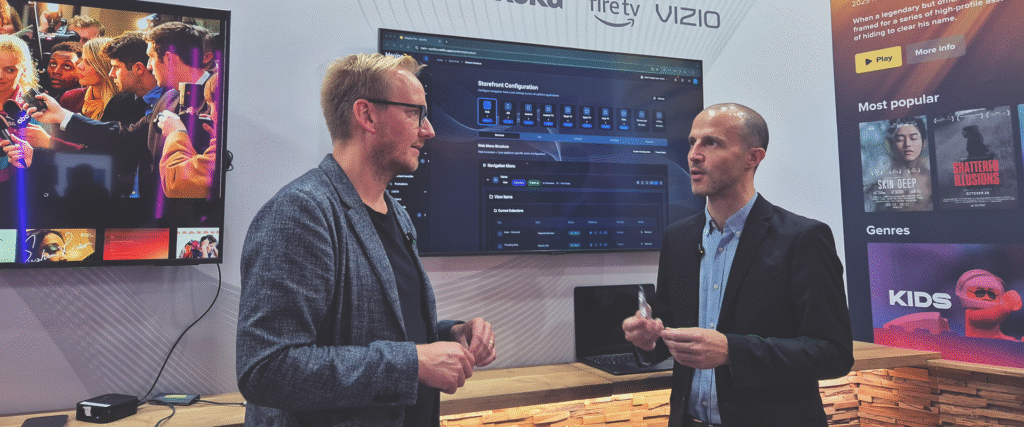The Hidden Cost of Context Loss in OTT Operations
Every OTT team aims to move fast. But speed alone isn’t enough if teams are constantly forced to stop, clarify, or rebuild missing information. One of the most overlooked barriers to operational efficiency in streaming is context loss: the gradual erosion of meaning as work passes between tools, teams, and systems.
It’s a challenge we hear about often from streaming companies of all sizes. Whether it’s a content issue, a billing query, or a technical fault, too much time is lost piecing together the full picture. Context, which should flow naturally through workflows, is often scattered, outdated, or inaccessible.
This blog explores how context loss undermines efficiency and what a modern OTT platform can do to fix it.
How Context Disappears
Context is what allows people to make decisions quickly and confidently. It’s not just data, it’s the meaning behind the data. And in most OTT operations, that meaning gets diluted every time there’s a handoff.
A support ticket might start with a user reporting a playback issue. But for the support agent to understand what really happened, they need to access subscription status, device logs, network diagnostics, and content metadata. Each of these is typically stored in different places. The information exists, but it isn’t connected. So they rebuild the story manually.
This happens across departments too. When you have a new movie or episode to put live, there will be concerns about metadata and artwork, but also video files to encode, not to mention negotiations and checks on platform rights and licensing windows. For all but the very smallest streaming services, this is the work of several different people or teams. They’re working toward the same goal, but each sees the task through a different lens. Without shared context, assumptions multiply and momentum slows.
The Cost of Fragmented Tools
Many OTT services work with a stack of systems that weren’t designed to talk to each other. CDNs use one set of metrics, CMS tools use another to track content through the supply chain, and the analytics platform also has its own figures. Support systems log issues using another taxonomy entirely. These systems may all function well in isolation, but they create friction when progress depends on information that spans them.
When teams have to translate between systems, decisions become slower and riskier. Even worse, they’re often made based on incomplete or inconsistent views of what’s really happening.
Rebuilding Context Takes Time
The real cost of context loss is cumulative. A product manager double-checks metadata. A QA team revalidates assets before delivery. A support team replays the same investigation multiple times for similar tickets. These tasks feel necessary, and often they are, but they’re also symptoms of a deeper problem: context isn’t preserved or delivered in the right way.
Over time, these small inefficiencies add up to slower launches, higher support costs, and internal frustration. Teams spend too much time looking backwards, reconstructing what should already be at their fingertips.
What a Good Platform Can Do
A well-designed OTT platform should help preserve and deliver context throughout the content and customer lifecycle. This doesn’t mean centralising all data in one dashboard. It means making sure each team sees the right information, in the right format, at the right time.
That might include showing support agents a timeline of relevant events for a customer issue. Or helping publishing teams to view content status with licensing, technical, and editorial flags in one place. The goal is to reduce manual effort and eliminate the guesswork that comes from working with partial information.
Where AI Fits In – And Where It Doesn’t (Yet)
There’s no shortage of AI conversation in the streaming space – IBC 2025 showed that artificial intelligence is still the industry’s biggest buzzword. But in our view, the most practical and valuable use of AI is in helping teams work with better context.
Imagine an AI assistant that notices five customers reporting similar playback issues, and correlates them with a spike in edge latency on a specific CDN node during a particular device rollout. That kind of correlation saves time and directs teams to the real issue faster.
This doesn’t mean replacing human decision-making. It means using AI to highlight patterns, reduce noise, and make it easier to see what’s important. At Magine Pro, we’re focused on adding AI tools that support context awareness, but we’re not forcing automation into our OTT platform for its own sake.
Turning Context into Competitive Advantage
Preserving context isn’t just about speeding up operations. It also improves decision quality, reduces churn, and enables teams to focus on higher-value work. When context flows smoothly across your organisation, your platform becomes easier to manage, problems are resolved faster, and teams make better use of their time. That frees up your staff to focus on your strategic priorities, like tackling subscriber churn and boosting user retention.
As OTT services scale, this kind of efficiency becomes essential. The complexity doesn’t go away, but with the right platform, the burden of managing that complexity doesn’t have to slow you down.
For a deeper dive into how context becomes king in OTT, and why context is sometimes more important than content, read the original article our CEO, Matthew Wilkinson, wrote for the IABM Journal in September 2025 on page 104, exploring how context-aware workflows can unlock smarter decisions across the entire OTT supply chain.





